Iconic...
Forgotten...
Timeless...
Innovative...
These are the soundtracks that helped shape and define what we hear in the video games that we play. I am Nitro, and this is the M Disk Playlist's Video Game Music Primer: 1998.
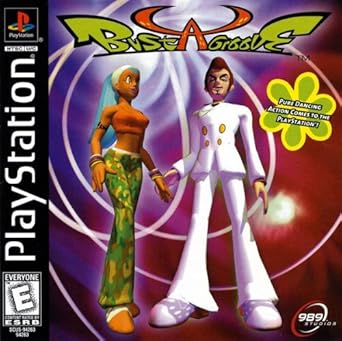
Bust a Groove (PlayStation)
When Parappa the Rappaer was released, it changed video games by helping establish music games stand out as its own successful genre. So when the music genre is meshed with another popular genre, the fighting game genre, you get this game. In Japan, it's called Bust a Move: Dance and Rhythm Action. But due to there already being a game in the west released as Bust a Move, it got renamed to Bust a Groove.
The premise of the game is simple; You control one of ten characters, with four additional ones you need to unlock. And then you go up against the other characters in different dance fights. Each character is represented by both a song, and a specific dance style. Styles include breakdance, disco, jazz, vogue, house, motown, capoera, and funk.
When the game was brought over to the west, changes were made to the cosmetics of the game, as well as the songs. The songs Uwasa no Capoeria, and Waratte Pon received English adaptations titled Capoeria, and Shorty and the EZ Mouse respectivly. Aozora no Knife, the song used for Kitty N got an English adaptation and a brand new arrangement simply titled Bust a Groove. Despite those changes, Frida's song Sora to Umi to Niji no Yume was completely retained in the west. Hamm, Strike, and Pinky had their songs slightly edited to hide a
certain racial slur, or to hide references to alcohol.
The entire soundtrack was produced by Japanese music company, Avex Group. Avex Group is famos for signing and producing some of Japan's biggest music talents like Ayumi Hamasaki, Do As Infinity, and Every Little Thing, just to name a few. To ensure that the entire game was playable to both casual and experienced gamers alike, each song was recorded with a 4/4 beat. That way, the entire game was consistant on when you needed to time the button pushing, only changing the tempo on certain songs.
Bust a Groove was a unique approach to both music games, and fighting games. It prooved to be a hit, spawning two additional sequels. Unfortunately, the second game was never released in Europe, and the third was only released in Japan. Nontheless, Bust a Groove has become a cult hit of sorts for its music, its unique gameplay, the cast, or a combination of all three.

Xenogears (Playstation), composed by Yasunori Mitsuda
Xenogears; the game that nearly didn't get released in the west due to its many religious allegories. It also has giant robots called Gears, and music composed by the man who helped enhance the world of Chrono Trigger. For this game, Mitsuda drew heavily on celtic music for the score. He also wanted to compose a score that felt organic enough to be apart of the cultures of other worlds, while simultaniously composing scores that matched worlds developed with his own imagination, almost exactly like how he composed Chrono Trigger.
Celtic music was not as well known outside of western Europe at the time, and Mitsuda understood this. He felt that Celtic music would become more widely recognizable, and wanted Xenogears to be part of that phonenomenon. What he did not anticipate was that North America was also on its way to embracing celtic music, with the score of the film Titanic, composed by the late James Horner. When Mitsuda learned about Titanic's score, he insisted that the score of the game at least be finished before Titanic was even released in theaters.
The battle themes should also be worth nothing. Every battle theme in the game feels like a dramatic life to the death, or an intense cinematic moment between the protagonist and the antagonist. And this would become a common thing with Mitsuda and his games, composing battle themes that felt dramatic enough to feel intense, but unique enough to where you can hear them again and again without getting sick of it.
While most of the soundtrack was recorded in Japan, certain pieces were recorded in other parts of the world. The Beginning and the End, one of the ending pieces, was composed in Sofia, Bulgaria and performed by choir group, The Great Voices of Bulgaria. This group used 41 different vocalists. No more. No less. The lyrics for The Beginning and the End were written by director Tetsuya Takahashi. They were written in Japanese, then translated to English, and then translated from English to Bulgarian for the final version. The vocal tracks were recorded in Dublin, Ireland, and performed by Joanne Hogg in two days. The first vocal track, Stars of Tears, cannot be accessed in the game through normal means. But if you put disc 2 of the game in a media viewer like a computer disc drive, a full motion video can be accessed that contains this song over footage from other FMVs in the game. The second, Small Two of Pieces, is used for the ending credits. Mitsuda and Hogg would collaborate with each other again for the 2002 release of Xenosaga Episode 1.
Near the end of the game, there is a small side quest involving the character Big Joe. If you give him 5,000 G's when he asks for it in the Norturne Civil Block, he will run away with it. Later in the game though, he shows remorse for his actions, and rewards you with an item that can be used in certain jukeboxes to play music from the entire game. That item is called the M Disk. And yes, that M Disk item is what the M Disk Playlist is named after.
Xenogears was a bold new direction for Mitsuda and his composition style. What didn't change was how he overworked himself to the point of exhaustion. His dedication to his work is scary. Whatever it took to get the score complete, he did it. He was not going to compromise his time if it comprimised any of his soundtracks. Xenogears was no exception to the work ethic he has for video game soundtracks.
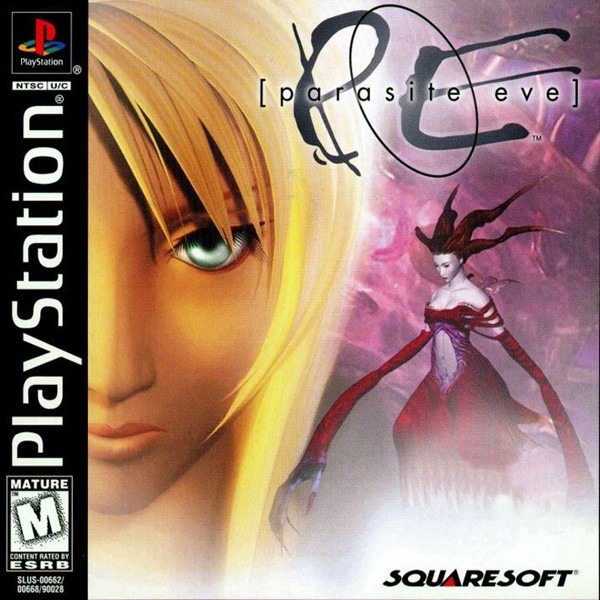
Parasite Eve was a unique game for Squaresoft at the time. The survival horror genre was starting to become prominant thanks to games like Resident Evil. To bridge what had made Squaresoft popular with the genre that had been growing in popularity, director Takashi Tokita, who helped direct Chrono Trigger in his last game at the time, took the original novel written by Hideaki Sena, and helped develop a sequel to the novel.
Action role playing gameplay was incorporated into Manhattan New York experiencing the horrors of mitochondrion. Parasite Eve not only gave Squaresoft the chance to develop a new type of game, but it also gave the chance for Yoko Shimomura to compose one of her most experimental compositions on her resume. Her approach to the game, according to the soundtrack liner notes translated by Ben Schweitzer, she compared her approach to composing the soundtrack with the limited expressions main protagonist Aya displayed in the game. She is quoted as saying; "I would let the music I wrote reflect my own mental state as I wrote it...I wanted to step back and restrain myself. More abstract, which is to say emotionless, I suppose. Maybe this way I could bring out the game’s atmosphere more, I felt."
Parasite Eve's music combines opera with electronica music, with opera being very integral to the plot, as main antagonist Eve is introduced as opera actress Melissa Pearce. In the beginning of the game, she performs an opera. In the middle of the performance, everyone in Carnige Hall spontaniously combusts in one of the most horrific scenes produced for a PlayStation game at the time. All except Melissa, and Aya. Melissa escapes and transforms into the demon who identified herself as Eve.
For the first time in Shimomura's professional history, she got to incorporate a vocal theme into her soundtrack via the ending theme, Somina Memorias. The song is performed by singer Shani Rigsbee. At the time, she wasn't as well known, which is exactly what Shimomura wanted, someone who wasn't immediately recognizable. Rigsbee's next project she worked on was for the movie Crash, which won an Academy Award for Best Picture in 2006. In 2014, she performed for the Dalai Lama with Iranian pop star Andy Madadian, otherwise known simply as Andy. The opera vocals were performed by real opera singer Judith Siirla. Shimomura wrote all the vocal pieces, including the operas. The piece, I Hear a Voice Asking Me to Awaken, is a music box arrangement of Johann Sebastian Bach's cantata; Wachet auf,ruft uns die Stimme, BWV 140.
Parasite Eve was not like any other game released by Squaresoft at the time, and it did not sound like anything Shimomura had composed for a game at the time. It was an experimental game all around. Shimomura would not return to the Parasite Eve series until the release of the PSP game, The 3rd Birthday, where she was joined by composers Mitsuto Suzuki, and Tsuyoshi Sekito. Parasite Eve still remains one of the more ambitious Squaresoft titles, and the soundtrack is still considered by VGM enthusiasts to contain some of Shimomura's best works to date.

Sokaigi (Playstation), composed by Hiroki Kikuta
Yuke's, widely known and still known today for their wrestling games, jumped into the role playing game genre with this Japan-only release. Hiroki Kikuta, who was one of Square's biggest composers thanks to the Seiken Densetsu games, was brought on to compose this game. And unlike a lot of games released on the PlayStation at the time, the entire soundtrack was composed using live instruments. Of course, this meant that the soundtrack would be a lot smaller than his previous works. But this was all by choice, as Kikuta did not want to have to modify sound drivers like he had to on the Super Nintendo. It was easier to just produce the music and record it as is.
Kikuta was very experimental with his music. For example, Quake, a piece that incorporates Japanese vocalists chanting in Malaysian, while the music itself was given greater emphasis over the lyrics, with it's heavy percussion normally heard in a rock song, strings and pianos normally heard in chamber music, on top of a chanting style inspired by Buddhism. Kikuta already meshed different styles of music together in previous works, but the opportunity to use live music helped Kikuta develop, enhance, and improve upon his own talents. And like Yasunori Mitsuda and Yoko Shimomura, Kikuta for the first time used a vocalist for one of his pieces. The ending theme, Lovely Strains, was performed by pop star Kotomi Kyono, who also served as the voice actress of main protagonist, Mizuho Mikanagi.
Unfortunately, while the soundtrack received very favorable praise, the rest of the game was nowhere near as memorable. Sokaigi's critical failure partly resulted in Kikuta leaving Square to form his own game company, Sacnoth, so that he would have more freedom over the games he would work on. His first game, Koudelka, was released in December of 1999, and would serve as the introduction to the Shadow Hearts franchise.
Sokaigi may not come close to matching the legacy he created with the Seiken Densetsu games, but Sokaigi did manage to show what Kikuta was capable of doing without any limitations to music quality.
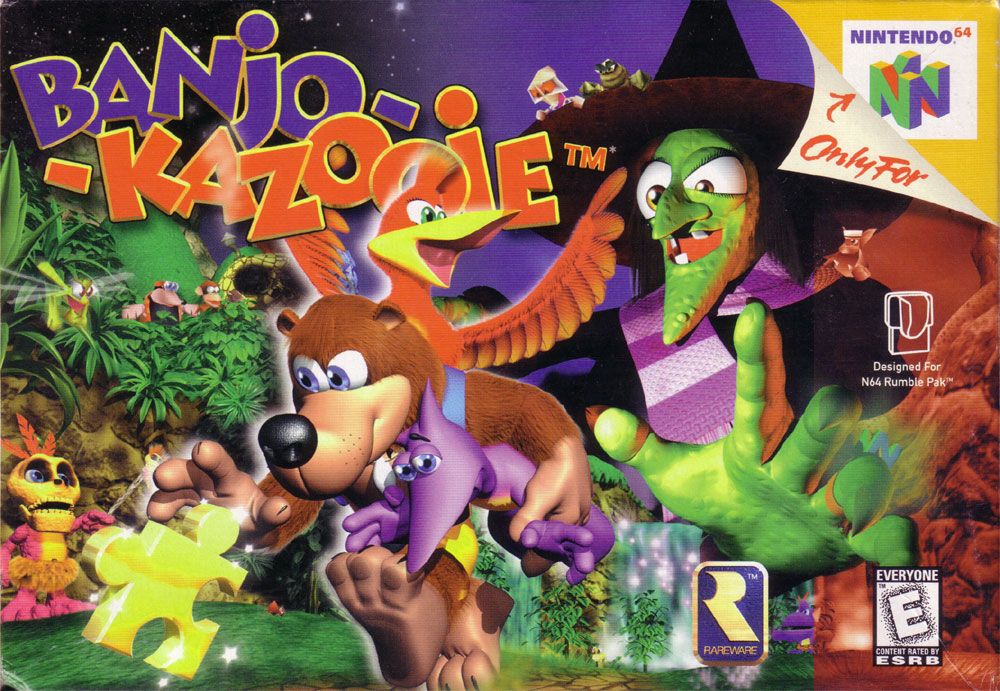
Banjo-Kazooie (Nintendo 64), composed by Grant Kirkhope
Super Mario 64 already defined the platform genre with it's freeroam gameplay, and stronger emphasis on exploring in an attempt to find all the necessary collectables to progress through the game. Banjo-Kazooie took what made Super Mario 64 great, and improved on nearly every aspect of it. The worlds were bigger, more expressive, and the soundtrack was some of the most dynamic works in video games.
The dynamic soundtrack can be heard nearly everywhere. In the tutorial world, the main hub world, and in nearly every single world the game offered. And we're not just talking about the change in tone when you went from swimming underwater to exploring the land. We're talking about simply moving from one section of an area to another. Every part of the game was not limited to just one piece, as typically expected in platform games at that point. Each part of the game did contain one piece, but that piece had multiple different arrangements depending on exactly where you were. Kirkhope also lent his voice in the game, as the garbled voices of Mumbo Jumbo, Bottles, and all the Jinjos you had to rescue in the game.
In an interview with Gamnesia, Kirkhope states that the inspiration behind how dynamic the soundtrack was came from the LucasArts games that used the iMUSE system in their soundtracks, specifically the Monkey Island games starting with Monkey Island 2: LeChuck's Revenge, the first game to use the iMUSE system. The game also drew comparisons to Disney animated films of their time. Not just the music, but the general asthetic as well. Rare's aim with the game was to make the asthetics appealing enough to draw in a younger audience while retaining the older audience with the game's humor, and challenges. Also, in an interview with OverClocked Remix, Kirkhope references this game in response to being asked what his best/most enjoyable memories from working on a soundtrack were.
Banjo-Kazooie's colorful world, dynamic soundtrack, and innovations to an already evolving genre made this game one of Nintendo 64's most exciting in their library. The same staff would develop the 2000 sequel, Banjo-Tooie, using ideas that were scrapped from the first game. Whether it's the first, or the second, fans of Kirkhope's work continue to hold the series in high regard, starting with this game.

Members Takanari Ishiyama, Gigi Meroni, Kazuki Muraoka, Lee Jeon Myung, Hiroyuki Togo, and Tappi Iwase each had a hand in composing what would become Hideo Kojima's biggest, grandest, most successful game at that point of his career. Tappi Iwase, credited as TAPPY, composed the main theme for Metal Gear Solid, and would serve as the franchise's signature piece, most notably being arranged by Hollywood composer Harry Gregson-Williams for Metal Gear Solid 2: Sons of Liberty. It is also used as a recurring motif when Snake is dealing with enemy forces, and during boss battles. However, with the release of Metal Gear Solid 4: Guns of the Patriots, TAPPY's theme was dropped due to allegations of plagiarism between his piece, and the piece "The Winter Road" by Russian composer Georgy Sviridov.
According to the Video Game Music Database page for Metal Gear Solid, only two composers got specific piece credits, while the other pieces were given vague credits to the Sound Team as a whole. Kazuki Muraoka, whose previous experience with Konami includes the original Contra arcade game, and the Nintendo port of the first Metal Gear game, composed the pieces Encounter, Intruder 2, Blast Furnace, and Rex's Lair. Maki Kirioka, whose first Konami game was this one, composed the piece Enclosure, the piece that places during the scene after you defeat Sniper Wolf for a second time.
Rika Muranaka wrote the game's ending theme, The Best Is Yet To Come, performed by Irish singer Aoife Ni Fhearraigh with the lyrics translated into Irish by Blathnaid Ni Chofaigh. Muranaka had previously wrote the song I Am The Wind for Castlevania: Symphony of the Night. She would go on to write more songs for the Metal Gear Solid series, most notably being the lyracist behind arguably Metal Gear Solid's most famous vocal track, Snake Eater.
Metal Gear Solid's VR Mission mode features an arangement of Iku Mizutani's piece, Theme of Tara from the very first Metal Gear game. When the game was re-released in Japan as Metal Gear Solid: Integral, it came with a third disc with brand new VR Missons. Gamers in the west may recognize such a disc as the stand-alone title, Metal Gear Solid: VR Missions. The extra VR Missions also features multiple callbacks to the Metal Gear 2 Solid Snake soundtrack. The Integral release also added hidden codecs. The hidden codec 140.66 allowed you to hear an arrangement of the Metal Gear 2: Solid Snake main theme. This codec is only available in the Integral release, which again, was released in Japan. Music was also used as a tool to enhance the story. The piece, Mantis Hymn, is not just background music leading up to the famous fight against Psycho Mantis. It is one of Psycho Mantis' abilities. The hymn is used by Psycho Mantis to manipulate ally Meryl into killing you.
Hideo Kojima did a lot of things in Metal Gear Solid that were unique, and truly ground breaking. The storytelling, the boss fights, and even the music were all done in ways that hadn't been attempted before. The soundtrack was a great bridge between people who had played the previous MSX releases, even the Nintendo releases, and those who had never played a single Metal Gear game before this one.
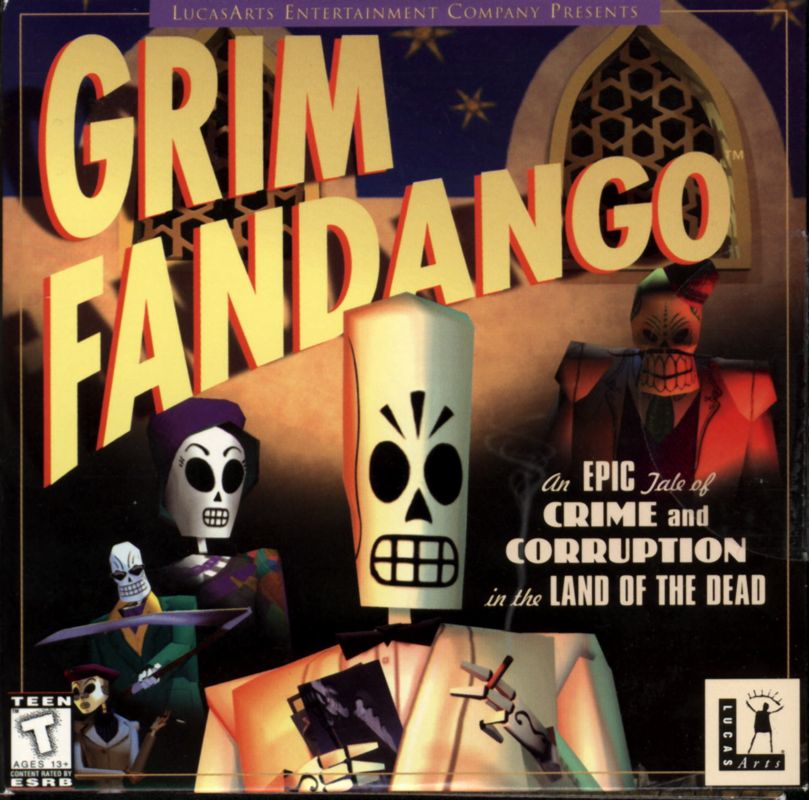
Grim Fandango (PC), composed by Peter McConnell
Peter McConnell had the following to help inspire the music for this game: Concept art from Peter Chan, a collection of Humphrey Bogart movies from director Tim Schafer, Mexican folk music, and the Mission District of San Fransisco. All these combustible elements helped McConnell compose perhaps LucasArt's most eclectic soundtrack in their library. The Mission District could be the most influental part of the soundtrack as the performers of the various instruments also performed at, or lived near or within that part of San Fransisco. Grim Fandango's soundtrack comprises of various forms of jazz, mariachi, and folk music. Some of which were blended together in eclectic fashion.
Grim Fandango is a film noir take on the events that occur during Dia de Muertos, the Day of the Dead. But instead of the game focusing strictly on the Day of the Dead, the game focuses on a mystery involving travel agent Manny, who must follow client Meche into the ninth underworld. Unlike previous LucasArts games, this game did not feature any cartoon-ish graphics. Instead, the game used pre-rendered backgrounds, and 3D character models. It was partly done to help the adventure game genre regain the prominance it once had in the early 90s. When the game was re-released in 2015, the game used a new, orchestrated arrangement of the entire soundtrack performed by the Melbourne Symphony Orchestra, who had previously helped with Double Fine's soundtrack for their Kickstarter game, Broken Age. McConnell states in an interview with Polygon that he had recovered the original Pro Tools file for the soundtrack, but opted to use a remastered soundtrack since some of the sound samples had since become outdated.
The soundtrack got an official release from LucasArt's own label company. The original soundtrack was titled Grim Fandango Soundtrack: Big Band, Bebop and Bones. The remeastered soundtrack also got an official release, and as of this production, it can be purchased wherever music is streaming.
Grim Fandango was LucasArt's next step in innovating the adventure genre. With it's more ambient storytelling, a film noir setting mixed with the Aztec belief of the afterlife and the traditional Day of the Dead holiday. And of course, it's music. Peter McConnell had been a musical staple of LucasArts since Monkey Island 2: LeChuck's Revenge. LucasArts had been enhancing and innovating the gaming industry with it's adventure genre. Grim Fandango took the adventure genre one step further, and McConnel's music were expanded upon with the release of this game.

The Legend of Zelda: Ocarina of Time (Nintendo 64), composed by Koji Kondo
No statement could accurately depict how much hype this game got during the first two years of the Nintendo 64's lifespan, and no statement could accurately depict how much universal acclaim this game got when it was finally released. The Zelda franchise made it's first jump from top-down 2D to a full 3D environment. And arguably, the actual story was more fleshed out in Ocarina of Time than it was in previous Zelda titles.
The original Zelda, A Link to the Past, and Link's Awakening each introduced musical innovations to the Zelda franchise. Ocarina of Time would introduce more, and would make music such an important part of the plot, it's biggest plot device, a musical instrument, got added to the subtitle of this game. The ocarina in Ocarina of Time is used to help Link traverse through dungeons, summon the horse Epona, to seek advice on what to do next, to manipulate the weather, and manipulate the day/night cycle.
In the second half of the game, you encounter the mysterious Shiek, who uses her harp to help teach Link new melodies. These melodies were used to help Link transport to different parts of the world, which in turn, allowed Link to enter newer dungeons. You can even compse your own melody, the Scarecrow's Song, to help Link reach different sections of certain area's which would otherwise be unreachable no matter how far into the main story Link is.
Some of the new recurring themes introduced in Ocarina of Time were the house theme, the official theme for the Lost Woods was established with this game, the cressendo used while Link is opening a treasure chest, a motif used for smaller items found in chests, and for the first time, using a tecnhnique called leitmotif in reverse, the music shifts from what you would hear in the overworld or dungeon, to a more tense battle theme when confronted by an enemy. The theme used in the Deku Tree ended up becoming a recurring motif representing hidden caves and dungeons in futurue Zelda titles. The Song of Storms, one of the melodies you learned, ended up becoming a signature melody in the next Zelda title, Majora's Mask.
Ocarina of Time changed the Zelda franchise in multiple ways. It is still debated as to whether or not this game is the best in the entire Zelda franchise. Regardless of which tier this title stands on, it's difficult to dispute the significance the music had on the game, and how it helped shape and define the rest of the Zelda franchise.

Suikoden II (Playstation), composed by Miki Higashino and Keiko Fukami
The main apppeal of the Suikoden series has been the concept of recruiting 108 characters to help you on your quest. The music is described by director Yoshitaka Murayama as something that encomposes all 108 characters together. Meaning, the music could not limit itself to just one culture, or one setting. It had to incorporate many cultures, many elements, and many different personalities.
Most of the soundtrack was composed by Miki Higashino, who joined Konami in the 80s with her first game being the arcade hit Gradius. Keiko Fukami's contributions to the soundtrack include the pieces We Are Number One, On a Sunny Day, and all of the minigame music except for the dancing and cooking games. The opening theme was performed by the Warsaw Philharmonic Orchestra & Chorus, conducted by Jerzy Swoboda. The ending theme, La Passione Commuove La Storia, was performed by vocalist Anelli, and conducted by Higashino herself.
The soundtrack was officially split into two volumes, each containing two CDs for a total of 105 pieces in the entire soundtrack. The large soundtrack was worked on with a small group of people. At first, it was just Higashino, and programmer Kiyohiko Yamane working on the entire soundtrack. A lot of crunch time was put into this soundtrack because Hgashino thought it was possible with just her and a few others to take on the daunting task. It was a task that she had underestimated, but a task that for better or worse, became her representative work.
The soundtrack ended up being so successful, and so high quality for a single-disc Playstation game, Final Fantasy composer Nobuo Uematsu was inspired by the Suikoden series to greatly improve the sound quality of his own music for the upcoming Final Fantasy VIII.
Suikoden II had an enourmous soundtrack for a game that offered so much to do for a role playing game on a single disc. Despite the fact that the soundtrack was composed under crunching circumstances, the game is still regarded as one of her best. After Suikoden II, she left Konami due to the demanding schedule to focus more on her family, leaving Michiru Yamane to take over the role of primary composer for the Suikoden series.
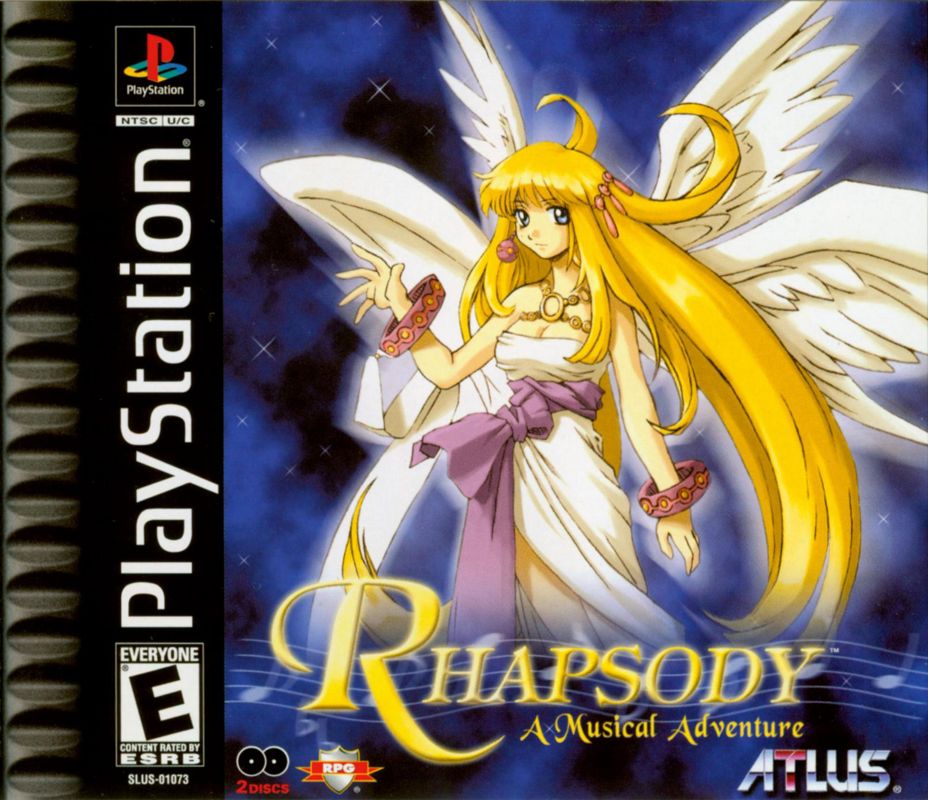
If the title of this game didn't give away what kind of game this is, and what kind of soundtrack you were getting with this game, maybe this clip will clear things up. This is literally, a musical role playing game. Instead of cut scenes advancing the story, the plot is advanced through song. Tenpei Sato has been playing the piano since he was six years old, and composed his first original piece at the age of twelve. His first video game scores were the games XZR and Valis II for the PC Engine through Telenet Japan. He hoped between gaming companies, including Nippon Ichi where he made a name for himself with his work on the Disgaea games and their spin-offs. Speaking of the Disgaea series, Rhapsody was developed by the same people who would go onto develop Disgaea and their sequels.
In addition to the musical numbers, Rhapsody stands out in the Playstation's RPG library for it's very cute settings and cast, easy difficulty, humorous dialogue, and fairly straightforward plot. In 2000, the game was translated to English, including the performances of the musical scenes, and localized by Atlus USA known for another popular RPG series, the Shin Megami Tensei series. The localizers even snuck in an easter egg to remind you exactly who published this title in the west.
Rhapsody could be viewed as a prototype for the kinds of games, stories, and characters that would come from Nippon Ichi titles. And although Sato had been composing for a long time, the music he composed for this game also serves as a prototype for what he brought to Nippon Ichi. As for the game itself, Rhapsody is a unique RPG, combinging very accessable gameplay to what is normally considered a difficult/not-so-casule genre such as role playing games with the entertainment value of musicals.

No comments:
Post a Comment